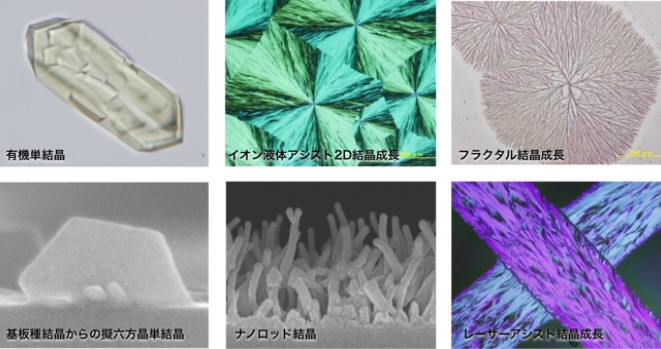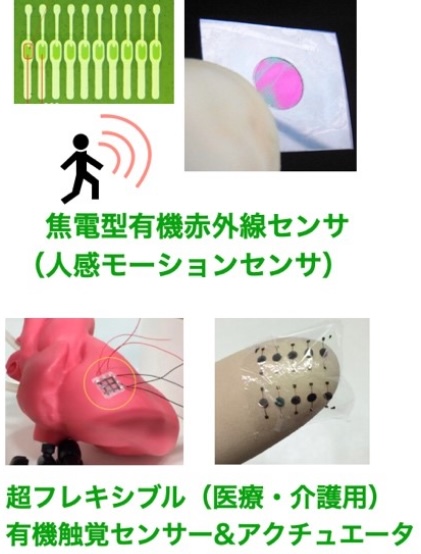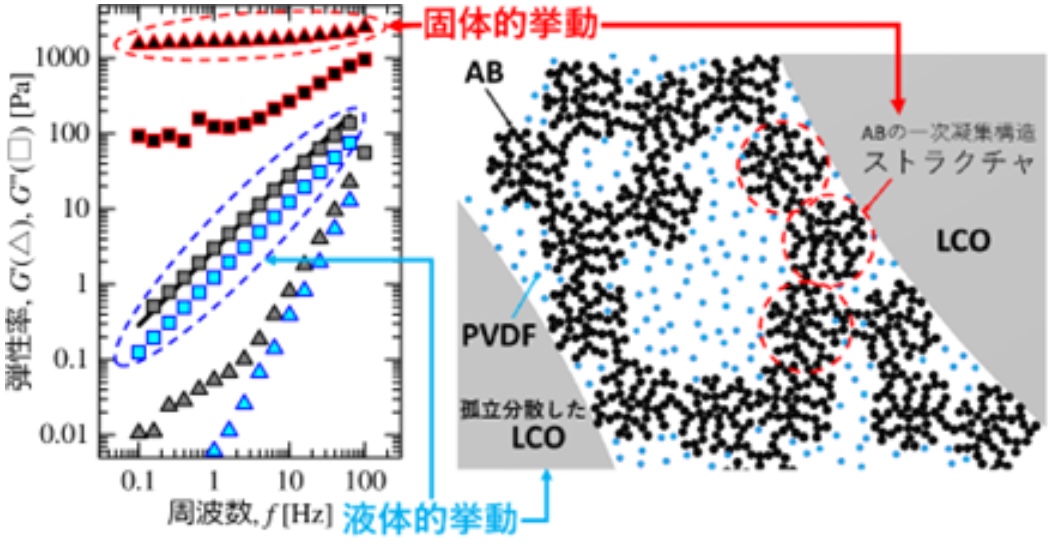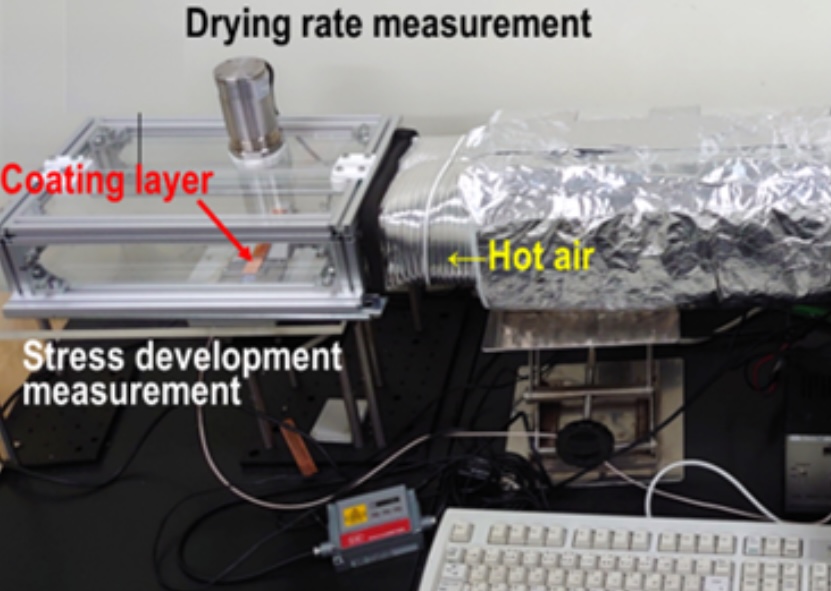Research Divisions
機能性薄膜研究部門
本研究部門では、次世代の光電子機能を有する薄膜デバイス創出および薄膜化プロセス技術の開発に向けた基礎学理の構築と応用に資する教育研究を行っています。
近年、軽量性、柔軟性、分子設計の多様性等の利点を有する有機材料を薄膜化して、有機エレクトルミネッセンス(EL)素子、 有機薄膜太陽電池あるいはメモリー、センサー等に応用する研究が活発に行われており、既に一部は実用化さています。有機材料の薄膜化手法も、真空蒸着などのドライプロセスに加え、印刷技術を利用するウエットプロセスへ展開を拡げています。この背景のもと、本研究部門では「1. ナノ構造制御した有機薄膜の新規作製プロセス開発」「2. センシング・創エネ応用に向けた有機強誘電体VDF系薄膜の開発」について、基礎から応用まで多様な研究を進めています。
また、燃料電池やリチウムイオン二次電池の電極膜、導電性薄膜などにおいて、粒子分散液から作成される塗布膜が、既に実用化されており、塗料の多くも機能性粒子が分散されています。本研究部門では、主に粒子分散材料を対象に「3. 粒子分散液内部構造のレオロジー解析」「4. 粒子分散液の塗布・乾燥プロセス解析」について、研究を行っています。
メンバー
- 舟橋 正浩 教授(部門長)
- 南 秀人 教授
- 菰田 悦之 准教授
- 堀家 匠平 准教授
- 鈴木 登代子 助教
- 小柴 康子 助手
Research Topics
ナノ構造制御した有機薄膜の新規作製プロセス開発

有機薄膜デバイスの実現には、薄膜化、配向化、素子パターニングを同時実現する必要があります。当部門では、プリンタブルエレクトロニクスにむけた新規成膜技術として、インクジェット、スピンコート、バーコート、摩擦転写、イオン液体中での合成反応・結晶成長、など新規成膜技術を研究開発しています。またドライプロセスとして、真空蒸着法において重要な薄膜成長パラメータとなる材料蒸気圧(真空TG法による減圧下での蒸気圧)測定や化学気相成長法による気固界面4量化反応などの研究開発にも挑戦しています。またカーボンナノチューブの電荷状態制御や機能評価にも取り組んでいます。
センシング・創エネ応用に向けた有機強誘電体VDF系薄膜の開発

フッ化ビニリデン基(-CH2CF2)-は、水素とフッ素の電気陰性度の違いから分子軸に垂直方向に大きな電気双極子を有します。当部門では、VDF系材料やポリ尿素、トリグリシン三リン酸(TGS)などの有機材料を対象に、膜構造や分子配向を制御することで、強誘電性、焦電性、圧電性の高効率発現を目指し、これら機能性を利用した有機不揮発性メモリー、赤外線・熱センサ(人感センサ・ガスセンサ)、圧電(接触・湾曲)センサ、振動発電素子、生体内へのインプランタブルセンサの研究開発を行っています。
粒子分散液内部構造のレオロジー解析
- 菰田 悦之

粒子分散液から所望の構造の粒子含有薄膜を得るためには,溶液中で粒子が形成する内部構造を理解する必要がある.しかし,粒子分散液は通常不透明で透過光による計測・観察が行えない.このため,粒子分散液に印加した変形に対応する応力から内部構造が理解できるレオロジー解析が有用である.当研究室では,レオロジー解析にインピーダンス測定やパルスNMR測定を組み合わせ,スラリー内部構造やその動的変化の理解を目指している
粒子分散液の塗布・乾燥プロセス解析
- 菰田 悦之

塗布時のせん断流動場および乾燥時の溶媒蒸発場が粒子分散液の内部構造変化に与える影響について研究している.塗布装置に応じて異なるせん断履歴が内部構造や塗布膜形状に与える影響の解明に取り組んでいる.一方で,乾燥工程については,乾燥速度変化に加えて粒子充填・応力発生などの同時計測手法を構築し,所望の膜構造を得るための操作条件およびメカニズムを調べている.



